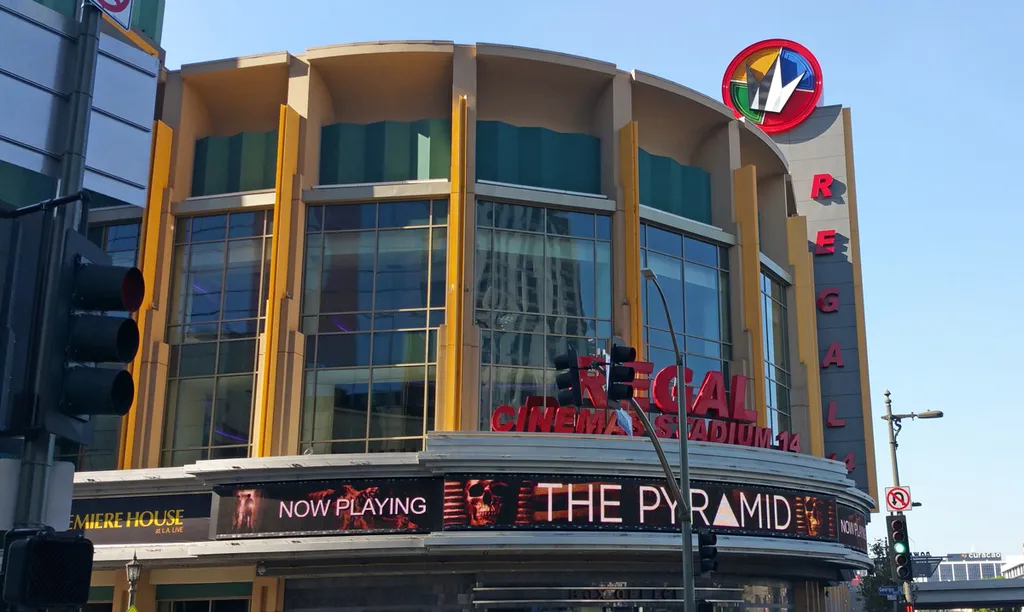In the heart of Los Angeles, California is a movie theater who was recently host to the seventh annual 3D Film Festival, which brought together several local VR demos; showcasing the potential that virtual reality has to change the movie going experience like never before.
Christopher Crescitelli, the founder of 3DFF, organized the event. This year he reached out to a couple of local virtual reality developers to create a VR Lounge embedded directly inside the Regal Cinemas’ 2nd floor. Each experience gave a glimpse into the types of content that might eventually find its way into theaters across the world.
Once checked in, people at the 3DFF event would venture up the stairs to where the demonstrations were taking place. Of those VR companies present at 3DFF, one was self-proclaimed pixel provocateurs, WemoLab, who were displaying their GearVR version of theBluVR which puts the viewer into underwater realms of the world’s vast and expansive oceans. Their immersive narrative reflected what an animated VR documentary could look like when integrated into a theater.
Next to the WemoLab table was the Dos Equis Masquerade experience produced by Felix & Paul Studios. The demo was a 360-degree video experience complete with fire-spitting, large cat interactions, beautiful women wearing masks, and of course the most ‘interesting man in the world.’ It was more of an advertisement than anything, but it would be a great way to start off a movie; almost like a trailer before the main event.
In the Dos Equis demo, the actor Jonathan Goldsmith walks up to the guest of honor who is the person wearing the VR headset and states that “things get more interesting when you put on a mask.” But as he goes on to say, it is all about keeping things interesting when you take the mask off.
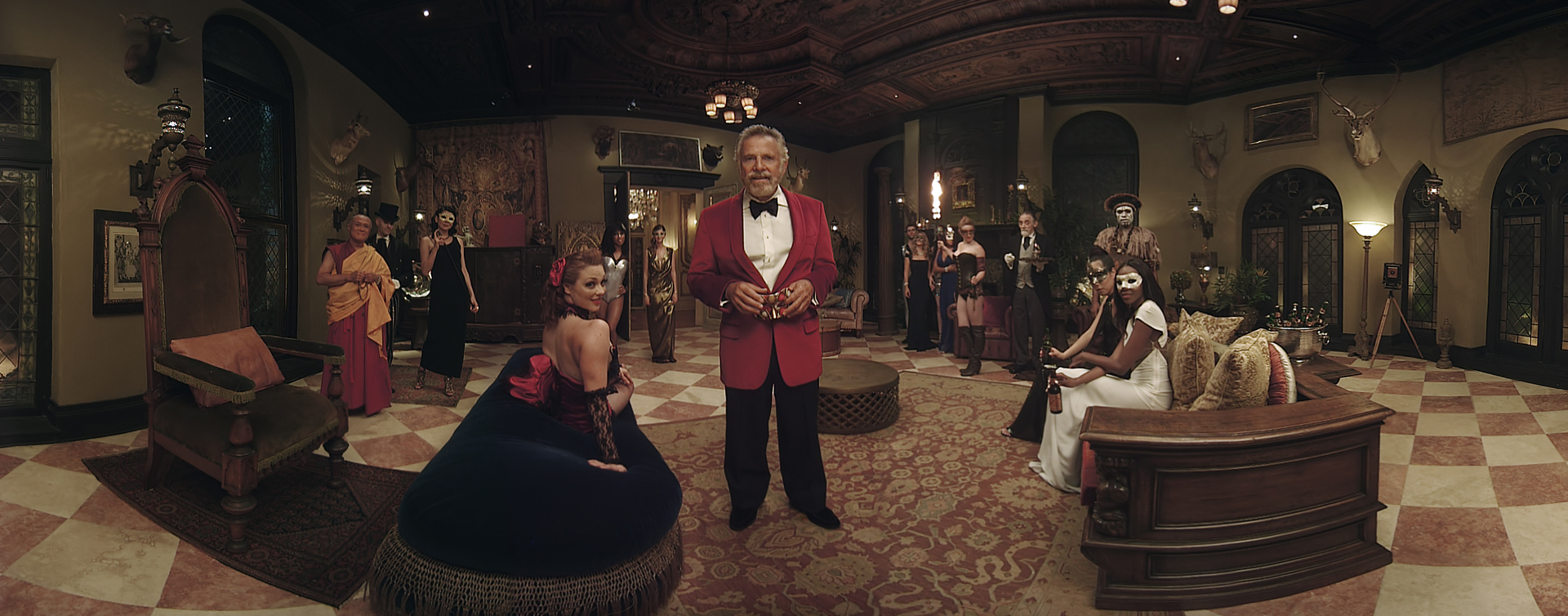
A couple of feet away was another table with an Oculus Rift DK2 and a Leap Motion attached to the front of it. The demo – Collider, created by Funktronics Labs, replicates a psychedelic experience of what it might feel like to be a tiny atom traveling through the Large Hadron Collider.
Being that the Leap Motion is a device that can detect hand movements, the Collider experience was able to provide additional ways to change what the experience did over time. It would be interesting to see something like this in theaters where each person had a different perspective of the same scene allowing them to change the environment depending on what they did with their hands.
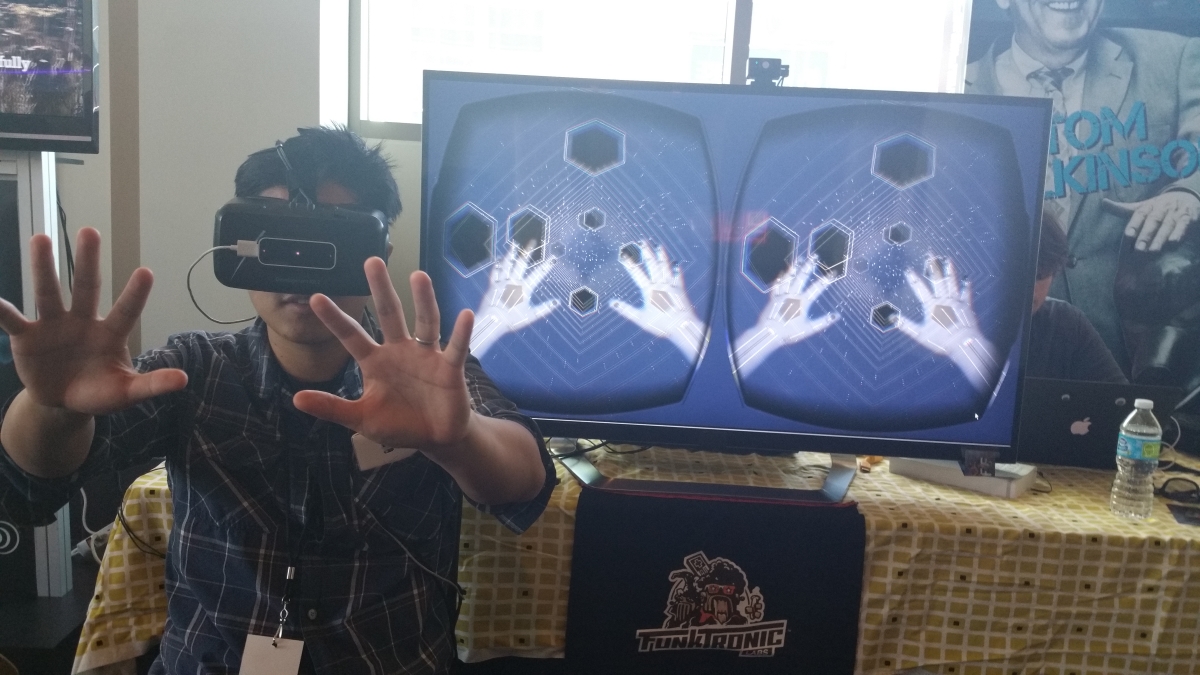
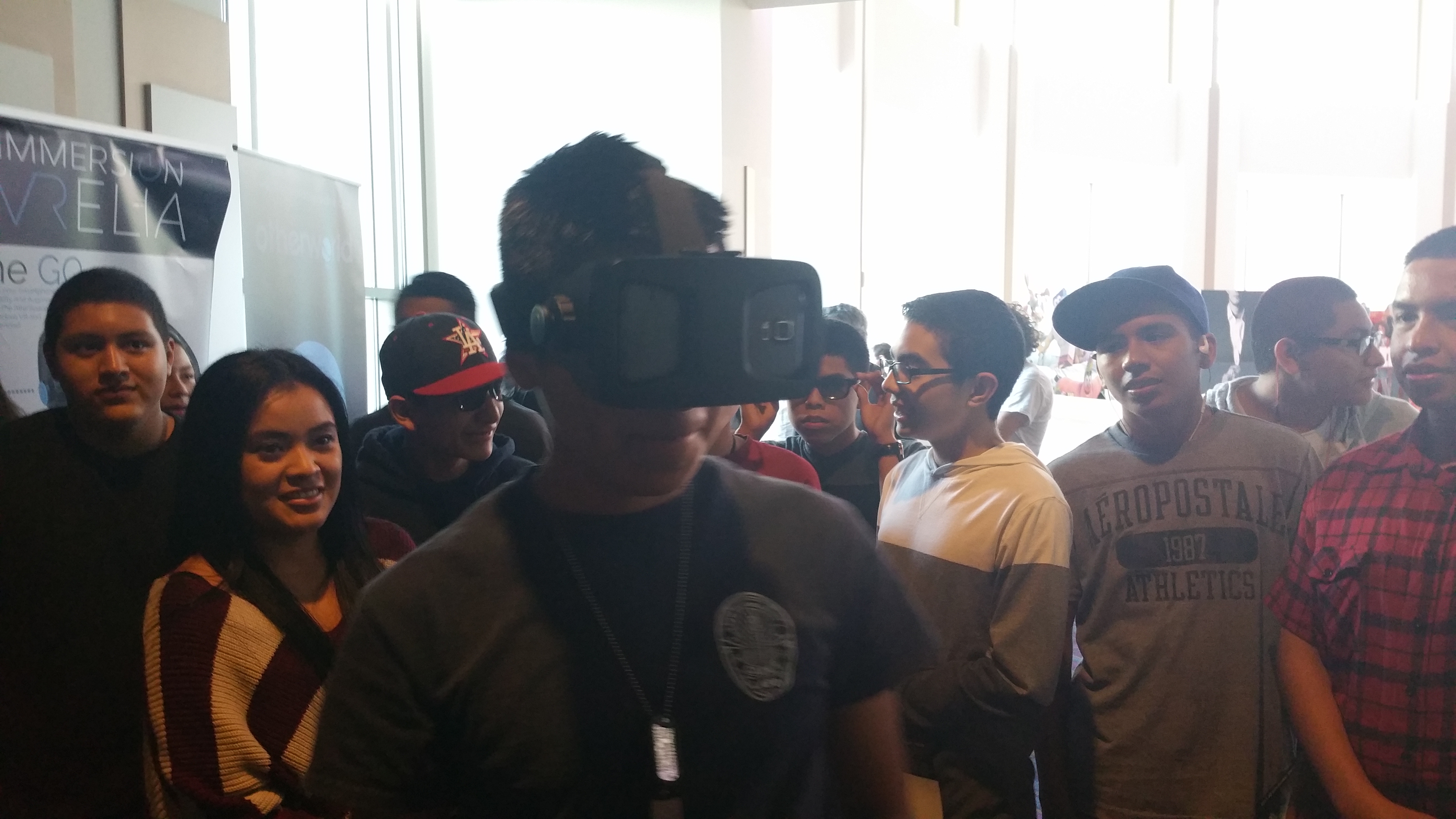
Across the room from the Collider demo was ImmersiON VRelia, a mobile VR headset that allows people to put their smartphone into the plastic so they can watch VR content. It was a little bit laggy and contained some serious stitching issues, but was by far the most popular attraction at the event. The ability for individuals to walk around was a key feature which in turn produced fun scenarios where kids would crowd around their friends laughing as the VRelia users would almost walk into walls and posters nearby.
It is a little bit difficult to think of mobile headsets being integrated into theatres because it would seem like future VR devices would be wired directly into the seats at the movie cinemas. However, something like this could be given away to those who attend the flicks. It would almost be like what 3D glasses at some movies theaters already have now that are so cheap that the movie company has no problem letting people walk away with them. It would even be more exciting if theaters used devices like this and utilized the pass through camera for augmented reality purposes which could then be taken home for future use.
Next to the ImmersiON VRelia booth was the VR company known as Otherworld Interactive, who was showing off a couple of their experiences. One of which was roboBLITERATION that was being primed to be released for Google Cardboard a couple days later. The game itself utilized a look-to-interact feature that would guide the character through a circular planet in space.
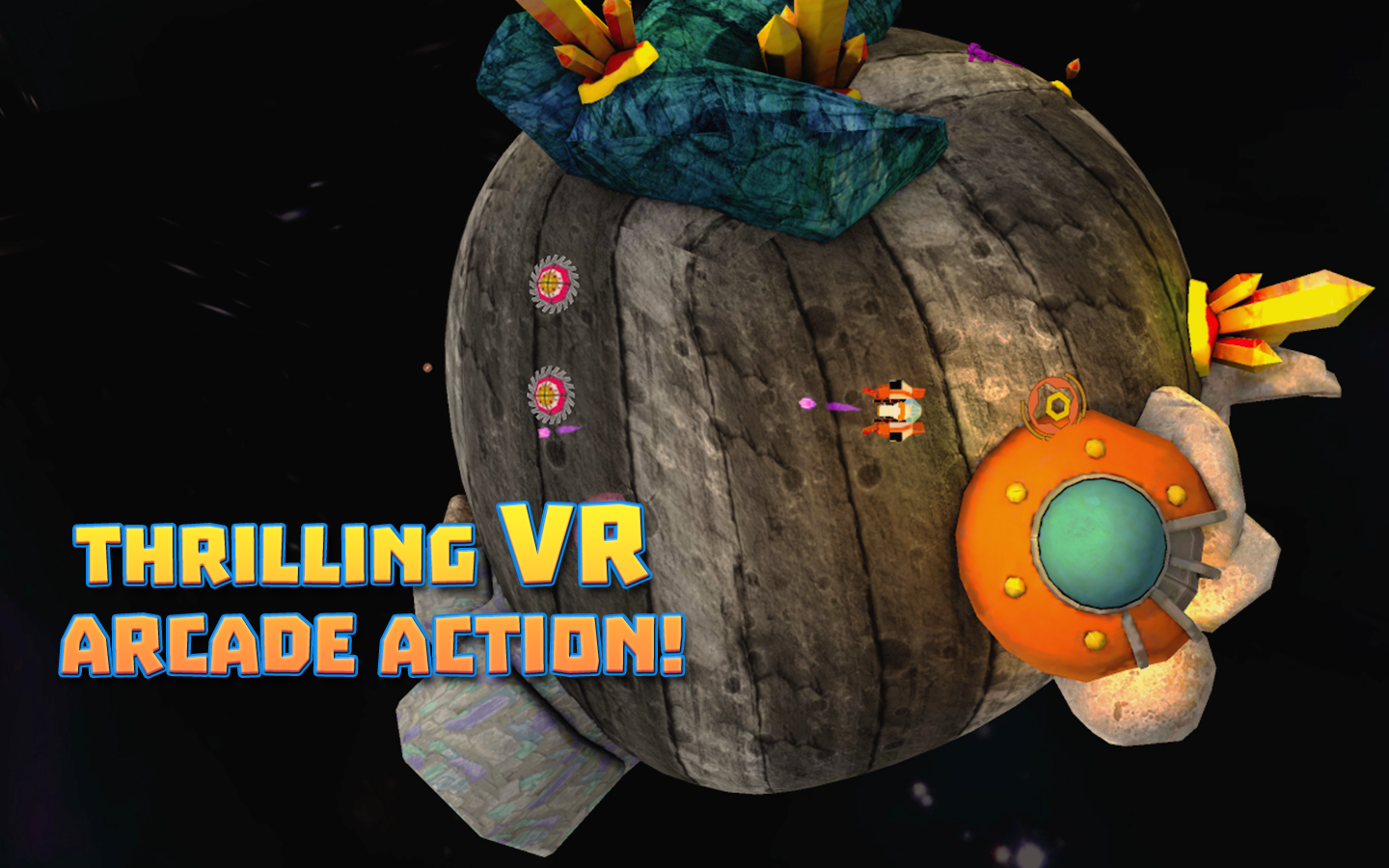
As Otherworld’s website says, the games is “a classic twin-stick shooter mixed with the futuristic fun of virtual reality.” People can sit in the captain’s chair and destroy their enemies with shooting lasers. Players become members of a futuristic Galactic Wrecking Company (GWC) who have been called in to exterminate an immense horde of deadly, malfunctioning robots, which is a lot of fun to play.
People could load games like this up while they wait for movies to begin.
And finally, last but definitely not least, a VR company called Specular Theory was giving people a glimpse into exciting 180-degree videos at the 3DFF event. They had two demos. One was a Venice Beach experience, while the other one put the viewer up closer and personal with beautiful women who were playing with fire fans. In the second experience, users were also taken to the front of the stage at a club where a DJ was getting the crowd hyped for the night. Team members of Specular Theory also talked about a thought provoking film made in collaboration with Sundance Film Festival veteran, Rose Troche. The upcoming 10 minute video is called Perspective; Chapter I: The Party and will be released at the Sundance Film Festival mid-January 2015.

Being that Specular Theory’s content contained real life events that actually happened, it is easy to see something like this being showed at a VR-integrated theater. Everything from live new events to documentary style films could use camera technology similar to this to depict various situations seen through the globe. Practically anything can be recorded and shown in this format through a virtual reality system like this.
Another recent example of how virtual reality is entering movies was seen in the Interstellar film release where virtual reality chairs were created on a stage in the lobby of AMC theaters at Universal Citywalk in LA. It was used to get people in the door by giving them an enticing way to explore the film’s environment before that actually opening day. The demo could even be synced together putting everyone wearing VR headsets into the same experience.
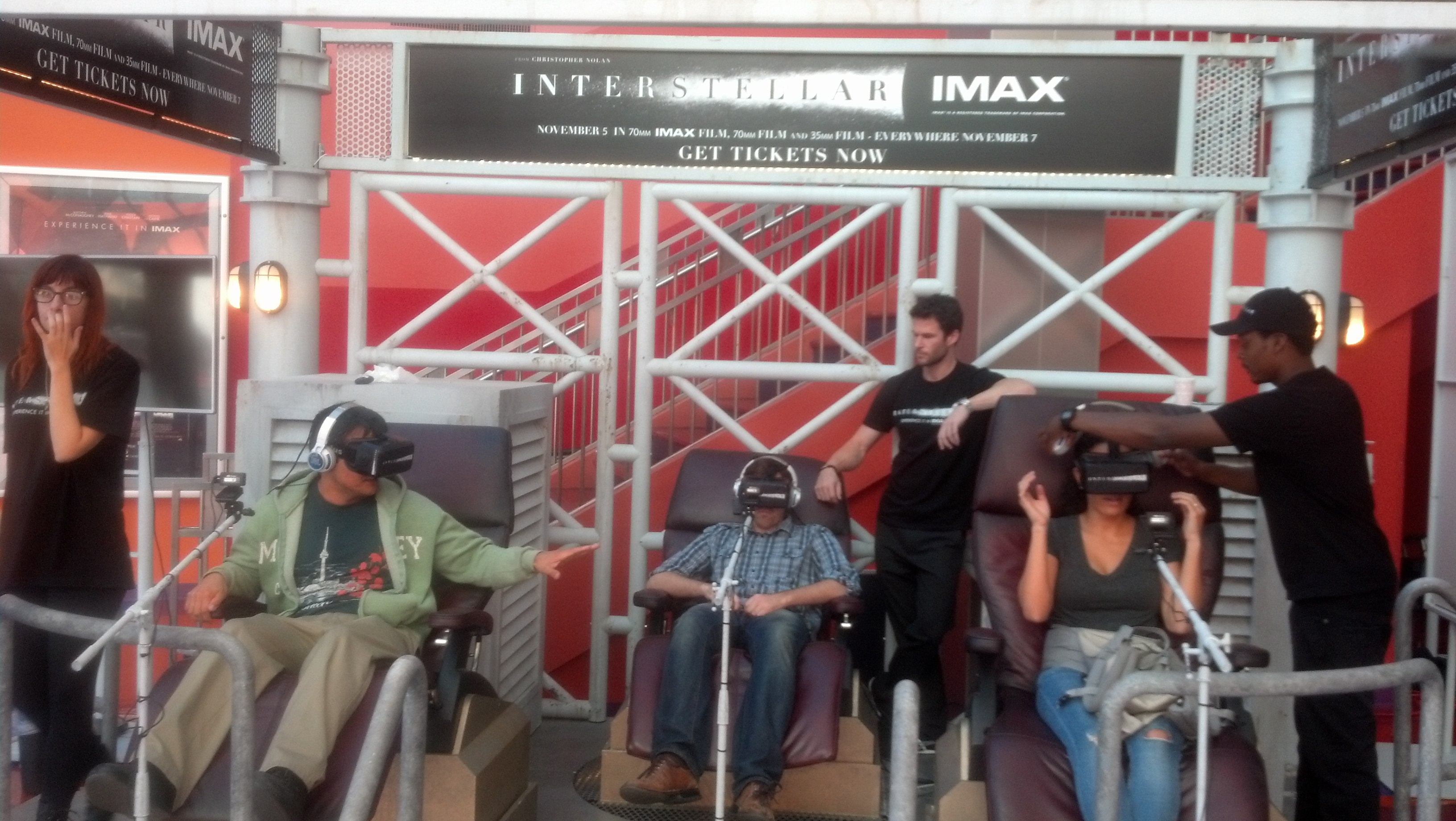
What made the Interstellar VR experience great was the hardware involved. All the chairs were hooked up to an Arduino that was programmed in Python that would load up the experiences when ready. Heavy duty XLR cables were routed to the VR systems pumping pristine sound into the headphones worn by those who put on the Oculus DK2 headsets on. The chairs themselves contained hydraulics that would drop the chairs down when a sense of weightless was initiated. The level of quality for this demonstration shows the extreme potential that virtual reality has to change the movie going experience forever.
All these demos have given people an insight into what virtual reality can do while they all stood and sat right next to hallways leading to giant movie screens during those days.
The obvious next step would be to add bass shakers to chairs that moviegoers would sit in providing haptic feedback that synced together with whatever would happen within the wide variety experiences they were watching. Scents of smell could even be added, but that probably won’t occur anytime soon. But when something like that arrives, it could include multi-sensory functionalities like the classic Sensorama machine that was created in the 1960’s ultimately bringing in the age of the long sought after “Cinema of the Future.”
With the amount of variations of virtual reality demonstrations being used as a base, theaters can continue adding more VR interactions. Whole rooms could be filled with shakable chairs with Virtual Reality headsets attached. Every one of the types of content seen at 3DFF would fit well in theaters.
The transformation from regular movies will be somewhat slow though, and there is a possibility that virtual reality might stop people from attending theaters in general because they can just strap on a mobile headset anywhere and watch a film wherever they are at.
However, if theaters provide additional functionality like bass-kicking chairs and more interaction than what a regular VR headset would give, then people will most likely pay the extra bucks and take the time to check it out. The bigger the attraction, the more attention it will get.
From now on though, it will just be a matter of time before more theaters start looking toward VR to get individuals in the door, and 3DFF did just that. It got people inside the theaters which is exactly what the large movie companies want; more individuals in the seats!
For more information about the 3D Film Festival and to find out about their upcoming tour, check out their website and follow them on Twitter @3DFF.

